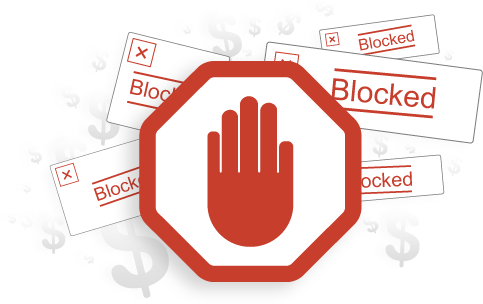 Regardless of who’s to blame for the mega-billion dollar ad blocking meltdown, it’s on publishers to fix it for their readers.
Regardless of who’s to blame for the mega-billion dollar ad blocking meltdown, it’s on publishers to fix it for their readers.
“When the new iOS released, the most popular paid app in the App Store was an ad blocker.”
That fact alone, cited in a Folio article by Jameson Doris, should be enough to tell you that ad blocking is a serious threat to the digital advertising industry.
“Domestically, ad blocking has become a major thorn in the sides of publishers as the technology has grown by 48 percent to reach 45 million active users from Q2 2014 to Q2 2015,” Doris notes. The growth, fueled to a frenzy by Apple’s support of ad blocking technology, doesn’t look to be slowing down soon.
Some may blame Apple for the recent escalation, but publishers and advertisers have worked together to create this problem by choosing data and profit over user experience.
“Publishers are already grappling with shrinking digital CPMs, a glut of inventory, visibility problems and non-human traffic. Now they must deal with a rising percentage of the population that they’re unable to reach with ads. Ironically, it’s an audience advertisers actually want to reach,” Doris writes.
Interestingly, most of the advertising people Doris interviewed for his piece seemed rather blasé in their respective responses to what is clearly a watershed moment for the digital ad industry.
“It is something we are actively discussing, but recognize that it will require a sensitive approach,” said Joy Robins, SVP of global revenue and strategy at digital agency Quartz.
“We’re continuing to evaluate a number of options and will soon be deploying tests to see how the various options lead to either recouping revenue from site sessions with users with ad blockers or create new means of monetizing those user sessions,” said Forbes Chief Revenue Office Mark Howard.
“The only impact it has on advertisers is that there is a growing percentage of the web audience that marketers aren’t able to reach,” he adds.
That seems like a pretty big impact, when marketers aren’t able to reach a growing share of their online audience. The only response that seemed to indicate any level of awareness of why consumers are blocking ads like crazy came from Seth Rogin, chief revenue office at Mashable, who said, “It is on us, as the industry remaking itself on a daily basis, to create premium experiences that readers don’t want to block.”
Yes. This is what consumers need to hear, that publishers understand the agreement between advertiser and reader was violated, and they must change the way they behave. Until they do, all the sensitive statements and deployed tests in the world won’t make this go away.
